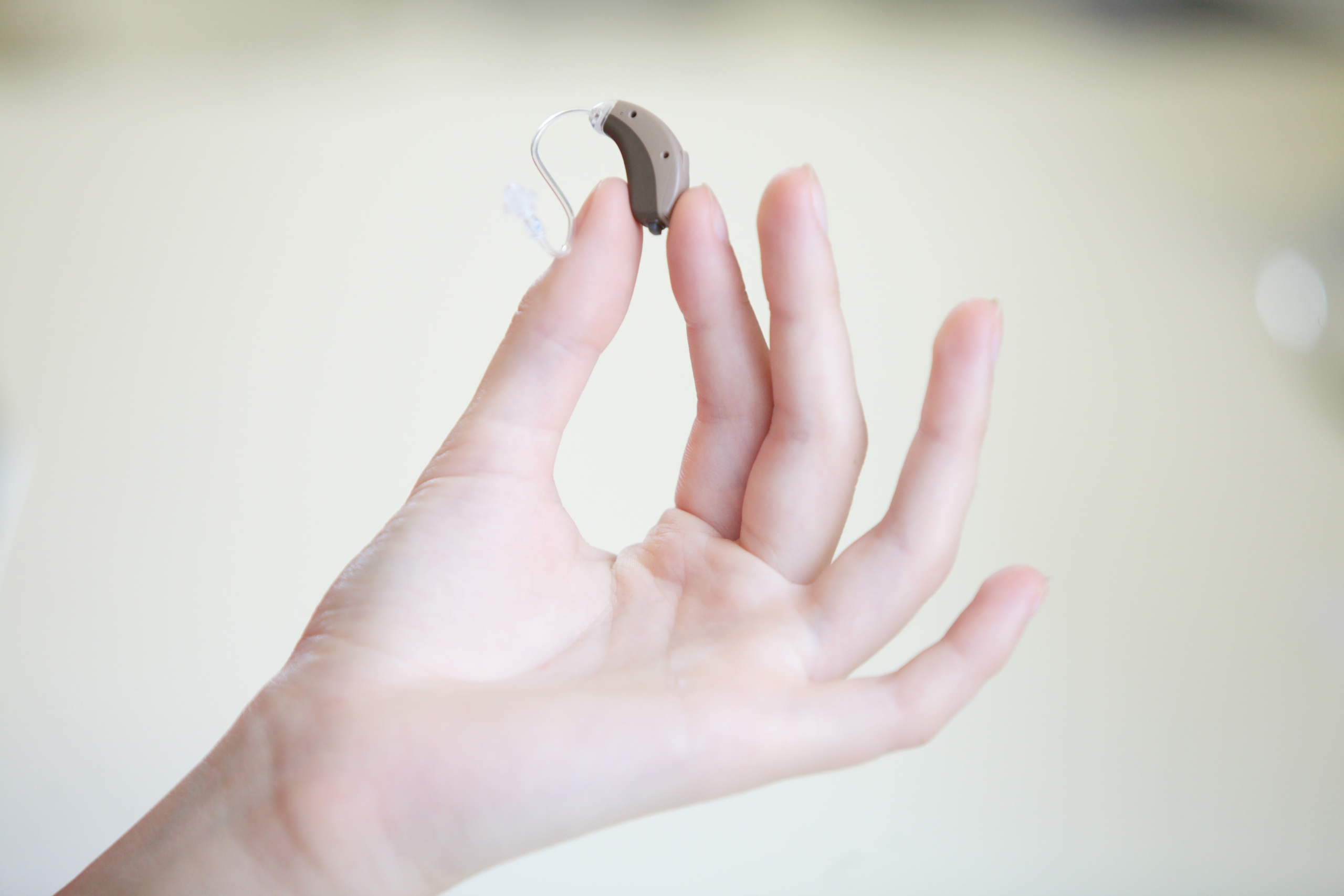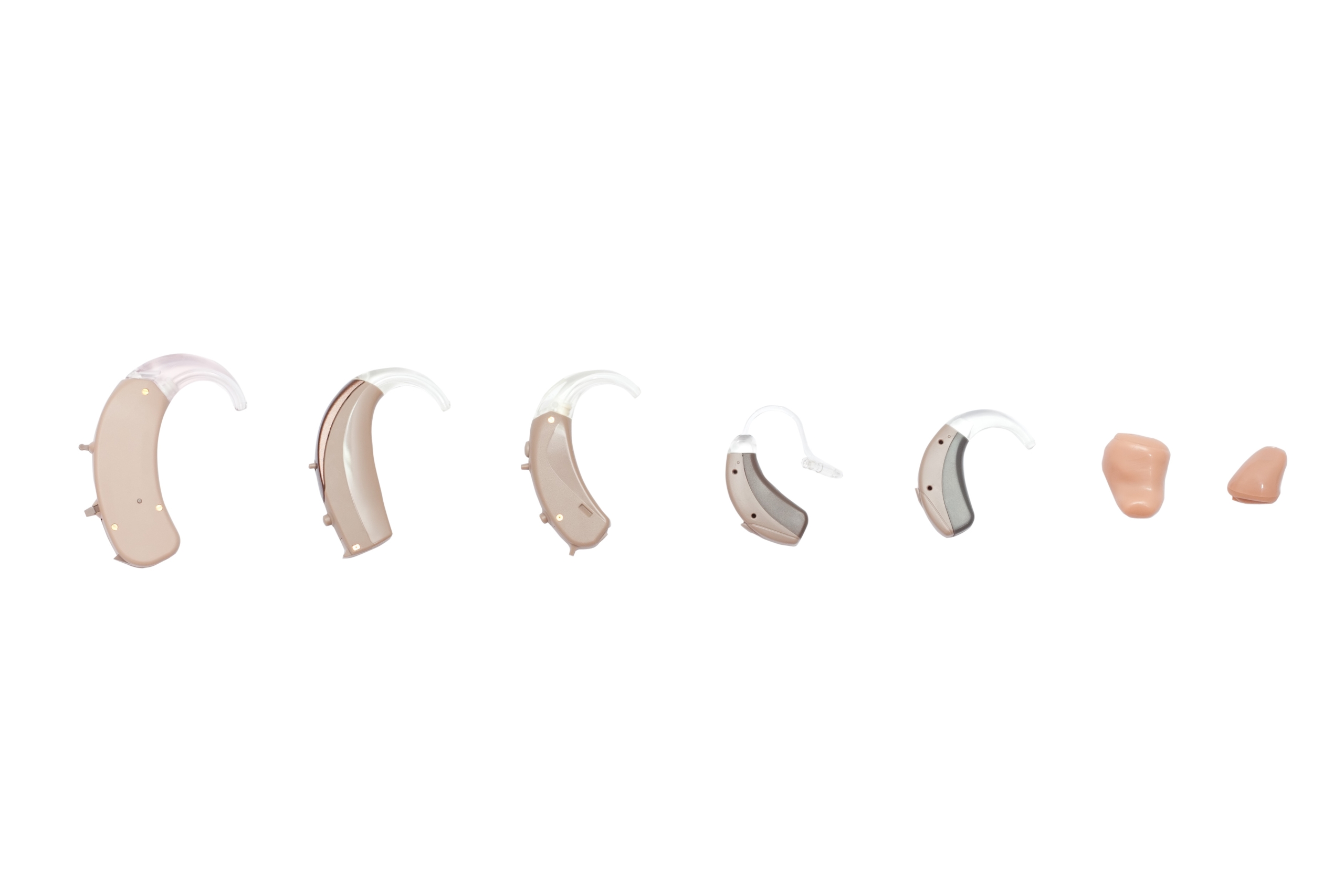Hearable devices are used in many ways for entertainment and communication. Most of us use hearable devices to listen to music casually and take or make phone calls. These hearable devices can also come as wired and/or battery-powered wireless earbuds, headphones, or a single earpiece.

Because of aging, exposure to loud noises, and certain medical conditions and other factors, approximately 15% of American adults age 18 and over report trouble hearing. This brings us to another segment of hearable devices that are both made to assist users in how they hear in a given environment: personal sound amplification products (PSAPs) and hearing aids.
In this article, we will describe what PSAPS are versus hearing aids and what they can be used for.
Personal Sound Amplification Products (PSAPS)

PSAPs are battery-powered electronic sound amplifiers that can help adults with normal hearing adjust and suppress noise in certain environments such as noisy restaurants, airports, subway trains, shooting ranges, and crowded public places. They can also be used in situations like hunting, bird watching, and listening to sounds that would otherwise be difficult for a person with normal hearing to hear. These devices can be purchased in most retail outlets and online retailers.
Like most hearable devices, PSAPS can be worn in or behind the ear or as a headset or neckband with earbuds. They typically contain a microphone, a receiver, and an amplifier to provide modest amplification of environmental sounds. The receiver amplifies sounds to allow the user with normal hearing to hear those sounds more loudly.
A person, however, may not hear or notice the benefits of using PSAPs if they have an underlying hearing loss condition. Though PSAPs are not intended to treat the medical condition of hearing loss, someone who has mild to moderate hearing loss might be able to use a PSAP as an option after getting a full hearing evaluation from an audiologist.
Hearing Aids
With nearly 27 million Americans age 50 and older having a hearing loss condition, according to John Hopkins University researchers, hearing aids can be a life-changing decision.
Hearing aids use the same basic parts to move sounds from the environment into your ear and make them louder. Small microphones collect sounds from the environment, and a computer chip with an amplifier converts the incoming sound into digital code. The amplified signals are then converted back into sound waves, and delivered back into your ears through speakers, also known as receivers. The hearing aid will then analyze and adjust the sound based on your hearing loss, listening needs, and the sounds around you.

The majority of hearing aids are digital and powered with a traditional hearing aid battery or a rechargeable battery. They also vary a great deal in price, size, special features, and the way they’re placed in your ear. Though hearing aid designers are continuously making smaller hearing aids to meet the demand, smaller aids may not have the power to give improved hearing.
Difference Between PSAPs and Hearing Aids
The difference between PSAPs and hearing is that hearing aids can be programmed to mute or amplify certain sounds. For example, it boosts a speaker’s voice over excessive background noise in a given environment. A PSAP, on the other hand, amplifies every sound, including the speaker’s voice, the whirring of a fan or air conditioning in the room, or the sound of a door opening and closing. As a result, this creates more barriers to hearing the speaker clearly.
Hearing aids, specifically those that are professionality fit and can cost an average price of $1,675 per ear, are regulated by the Food and Drug Administration (FDA). The more affordable over-the-counter (OTC) hearing aids are expected to join that list in 2022. Approval and regulation by the FDA are necessary, because hearing aids are medical devices intended to treat the medical condition of hearing loss. Meanwhile, PSAPs are not intended to treat hearing loss, so they aren’t considered medical devices and, consequently, are not regulated by the FDA.
The main difference between hearing aids and PSAPs is the way the device helps the user hear better. PSAPs are used to accentuate sounds in specific listening environments rather than in multiple, everyday situations, while a hearing aid compensates for impaired hearing.
How Ambiq is Contributing
Ambiq’s ultra-low power System on Chips (SoCs) are transforming hearable technology, both in terms of their capabilities and their potential. By enabling always-on voice detection and recognition, ear-worn devices can go beyond basic functionalities.
For the last ten years, Ambiq® has been laser-focused on inventing and delivering the most revolutionary System on Chip (SoC) solutions in the market. Through the advanced Sub-threshold Power Optimized Technology (SPOT®) platform, Ambiq has helped many leading manufacturers worldwide create products that can operate for days, months, and sometimes years on a lithium battery or a single charge. Visit ambiq.com/hearables for more information.


